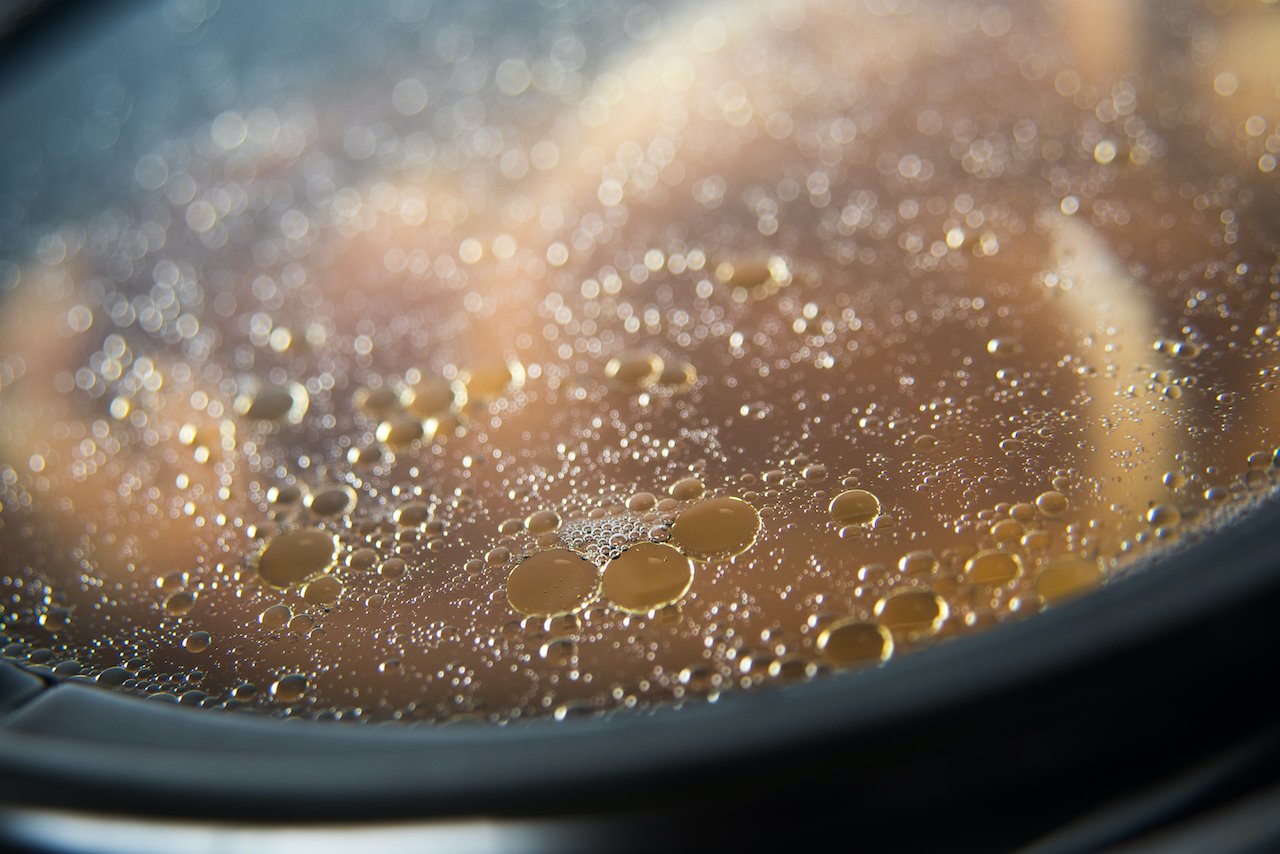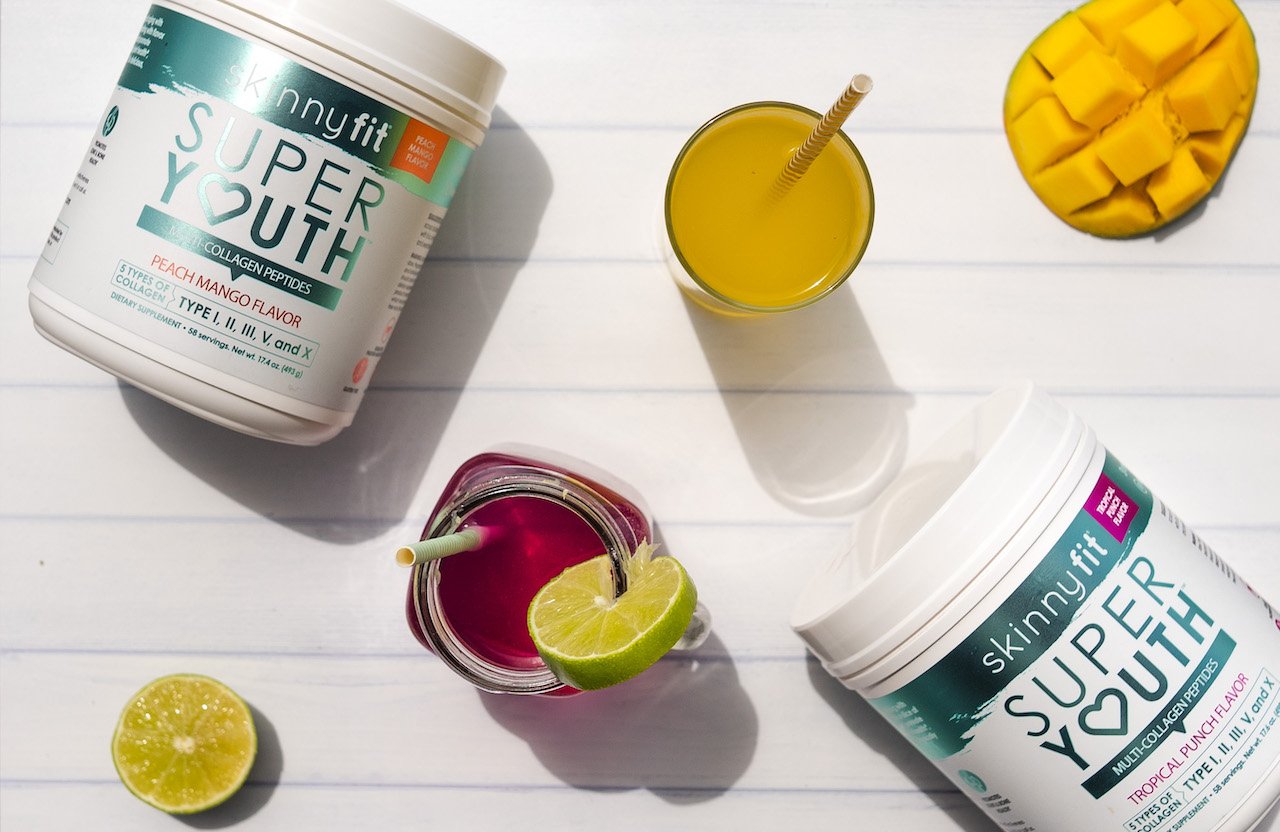How much money would you pay for a product that claims to make you younger, healthier, and prettier? $10… $30… $90? Put your billfold away; it’s a trick question. I don’t want you spending your hard earned money simply on claims, particularly those based on little-to-no science. Such is the case with bone broth collagen.
In recent years, the benefits of drinking bone broth have raced across airwaves and social media feeds, with *claims* about its benefits only echoing louder and louder, despite a perplexing lack of research to back up nearly any of them.
If you’re a fan of Dr. Oz or pay close attention to celebrity endorsements, you might be confused. That’s understandable, and totally OK. It can be overwhelming to try to distinguish credible science from incredible hype. But as they say, the devil’s in the details—and that’s why we’re going to dive right into what’s true, what’s not, and why.
By the end of this blog, you should be able to separate the plausible from the “oh, please!”, and be able to make the best choice for your health, beauty, and long-term fitness in regards to bone broth and collagen intake.

Article At A Glance
Here’s what we’ll be covering…
- What is bone broth & why is it popular?
- Bone broth vs collagen
- Is bone broth a good source of collagen?
- Final thoughts on bone broth collagen
What Is Bone Broth & Why Is It Popular?
We’ve known for a long time that collagen, being the most abundant protein in our bodies, is invaluable for the upkeep and even the physical appearance of our bodies. (More on that below.) But in recent years, commercial desire for what’s novel and natural has put bone broth high on the list of preferred collagen sources.
Bone broth collagen is exactly what it sounds like: collagen you get when cooking bone into brothy goodness. As a dietary supplement, it’s often sold as a liquid or as bone broth collagen powder. Unfortunately, the hype-to-research ratio on this one is skewed well toward hype. As more studies come out, it’s becoming clear that bone broth collagen, while certainly a real thing, offers far fewer benefits to our bodies than collagen peptides.
So why the bone broth vs collagen debate? Why is it so popular? Bone broth has been used for centuries as a healthful food, particularly in traditional cultures. And there’s a lot to be said for it being healthy for you—but as we’ll explore, it’s just not a particularly good source of collagen.
It’s totally understandable to want to derive nutrients from their most natural sources possible—and since 90-95% of the organic compounds in mammalian bone mass is collagen, the drive to get your collagen directly from the source is natural. But as it turns out, it’s not ideal. To understand why, we need to look at what bone broth and collage each are. [1]

Bone Broth vs Collagen: What’s The Difference?
Bone broth & bone broth collagen
Bone broth isn’t difficult to make. Simmering the bones and connective tissue from chicken, beef, pork, and other edible animals in a pot of water gives you a dense stock that’s perfect for making deliciously flavorful soups and sauces.
Broth can be made from meat and skin as well, but this process lacks the same level of nutrition as making it from bones (and, if you ask my grandmother, it lacks the same amazing taste 👵🏼). This is because true bone broth has to cook for about 8 hours. The cook time for commercial bone broth and stock is usually far less; so fewer nutrients are released.
When cooked for extended periods, the amino acids that compound to make collagen undergo a process called hydrolysis, which turns the pure collagen into a new form called gelatin. Yes, the same gelatin that goes into marshmallows and gummy bears. Sure it’s tasty, but take it as an immediate red flag in regards to overwhelming health claims.
Gelatin has become one of the most loudly praised types of bone broth collagen, though this praise is not founded on much, if any, scientific research.
Collagen & collagen peptides
As mentioned above, collagen is the most abundant protein in our bodies, composed of amino acids and prevalent from our hair to our skin to the bones, ligaments, tendons, and cartilage beneath it. When we’re born, we have an abundant supply of collagen, letting us run, leap, fall, stretch, move, and grow into adulthood.
But that’s when things get complicated.
Leaving our 20s and entering our 30s, our body’s cache of collagen begins to decline. And it doesn’t stop. 😱 This causes our hair, skin, nails, and joints to degrade rapidly.
Every click and pop in your knees, hips, elbows; every gray, brittle hair; each weakened nail; even things like leaky gut… they’re all indicators of declining collagen and increasing age, like some biological graffiti tag to let you know: “COLLAGEN WAS HERE!” Just… not any more.
Here’s the thing: Increasing your collagen levels to healthy amounts CAN lay the brakes down on the symptoms of aging. But it needs to be the right form of collagen, specifically hydrolyzed collagen. [2]
Here’s the difference
Hydrolyzed collagen is collagen that’s amino acids have been broken down into peptides, which are much smaller and more easily absorbed into our bloodstream and supplied to our hair, skin, nails, joints, and more. When it comes to the debate over bone broth vs collagen, this is a huge factor. [3]
While gelatin has undergone hydrolysis up to a point, it hasn’t broken down into collagen peptides, so the amino acids are still relatively large. This means that gelatin and bone broth collagen powder derived from it aren’t easily absorbed, and won’t be effective at slowing the signs of aging or repairing our bodies. [4]
Is Bone Broth A Good Source Of Collagen?
But what about all the claims you’ve heard about how much better it can be to have bone broth or bone broth collagen powder? Let’s examine the four biggest claims in detail.
Claim 1: It helps your skin – Mostly false
Wouldn’t it be great if slurping down the last drips of a bowl of beef stew could banish wrinkles and brighten skin tone?!
The fact is, exposure to stresses such as UV light causes our skin to progressively lose its tightness and glow. What’s more is that constant exposure means our skin is always susceptible to free radicals and irritants that damage its cells. Collagen peptides, on the other hand, can help restore collagen function in the skin and has been proven effective against age- and exposure-related skin deterioration. [5, 6]
Claim 2: Bone broth collagen eases joint pain – Mostly false
In the same way that different states of bone broth collagen can potentially have a slight impact on your skin if you guzzled heaps of it, there’s the potential to do the same for your joints. But here’s where the claim becomes improbable—if not downright impossible.
Firstly, you’d be consuming gelatin. Let me put on my lab coat for a second… Gelatin is a partially broken-down state of pure collagen. The long-form amino acids in gelatin do not completely break down into collagen peptides, and are too large to be easily absorbed into our bloodstream and digested. This means that their effectiveness to lubricate joints, rebuild tendon and ligament collagen, and ease pain is severely reduced. [4]
Secondly, there are different types of collagen peptides, each serving a different function. Collagen type I, for instance, supports skin elasticity, while types II and X are great for joint cartilage. Different collagen types come from different sources. Drinking bone broth collagen from one type of animal bone means you’re only getting one or two types of effective collagen.
Compare that to Super Youth multi-collagen peptide supplements, which contain 5 different types of collagen from 4 premium sources, and you’re getting a wide breadth of collagen treatments! And because Super Youth uses high-grade collagen peptides, it’s easy for your body to break down and absorb without feeling bloated. (It doesn’t hurt that Super Youth comes in crave-a-licious flavors and a perfectly unnoticeable unflavored option.)
Claim 3: Bone broth collagen is affordable – Uhh… No.
The only way this is true is if you don’t use math.
Single-serve drinkable bone broth collagen often fetches around $10.50 per serving. One serving… 10 dollars… Think about that.
Maybe someone like Rihanna would find that cheap, but most of us would have to “work work work work work work” overtime to afford that.
Even making it at home isn’t cheap, especially considering how many pounds of bones you would need to make a daily supply of bone broth collagen. My whole family would have to be devout carnivorous to have enough bones leftover to make a day’s worth of broth for each of us. The very best I could find was a chicken broth recipe that required one carcass. Not sure about you, but I’m not eating an entire chicken every day or so. Nor do I have the time to constantly be making my own broth.
Claim 4: Bone broth collagen powder is the answer. False.
This one’s a hard NO.
Powderizing something doesn’t all of a sudden make it healthier. Bone broth collagen powder is still the same type of long-chain amino acid compound that your body struggles to break down and absorb. The only thing is, now, instead of cooking it yourself you’re paying up to $50-60 for less than a month’s supply of something that’s far less effective than it’s peptide counterpart. [2]
This is where the difference between bone broth collagen powder and multi-collagen peptides really shines. You just don’t get the same level of nutrition in bone broth vs collagen that has been processed down to absorbable peptides, which your body loves, craves, needs, and knows what to do with.
 The Bottom Line On Bone Broth Collagen
The Bottom Line On Bone Broth Collagen
The growing popularity of bone broth has inspired researchers to examine its efficacy as a collagen source. Their findings clearly show that the best source of collagen is hydrolyzed collagen peptide supplementation. The vast majority of bone broth collagen isn’t easily absorbed by our bodies. And even bone broth collagen powder doesn’t offer the same benefits as something a peptide powder like Super Youth provides.
I like to think of it as a distillation process. Bone broth collagen is basic and unrefined—a lot like my ex 😅—whereas hydrolyzed collagen is the finest, most digestible form. In other words, just because you have potatoes doesn’t mean you have vodka. 🍸
